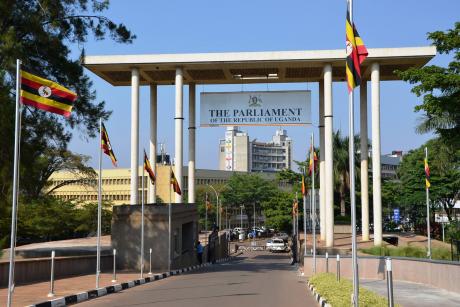On 22nd August 2019 under the theme “Accelerating economic growth for shared prosperity”, Ministry of Finance Planning and Economic Development (Mofped) in partnership with International Growth Centre (IGC) held the 3rd Economic Growth Forum to address the question on Uganda’s economic journey in terms of where we are today, where we want to be in the nearby future and how to get there.
For starters, economic growth in lay terms is an increase in the amount of goods and services produced in an economy over a period of time say a year.
Where are we?
Uganda’s economy is estimated to have grown by over 6% in 2018/19. Income per capita was last recorded at USD 709.70 in 2018, this has been attributed to the favorable weather conditions, active government policies in the agricultural sector, impressive sustained growth in the service sector driven by financial institutions, transportation, hospitality, information and communication among other services and finally growth in industries driven mainly by manufacturing and construction.
Despite registered growth in the economy, we have also registered many challenges that impeded growth such as high poverty rates which are said to be at 19.7% and a fast growing population which is semi-skilled and largely employed in the agricultural sector that is largely characterized by slow technological progress and limited value addition.
With the high under and un-employment numbers, Uganda has 80% of its labor force in the informal sector and hence out of the money economy. Low private investment and a large agranian sector translate into limited growth of high value globally competitive exports resulting into trade deficits as imports continue to perform better than exports.
Where are we going?
According to the Second National Development Plan 2015/16-2019/20, Uganda is expected to attain middle income status by 2020 with an income per capita of USD 1,039 by 2019/20 and USD 9,500 by 2040. The economy is projected to grow at a rate of 6.3% in 2019/20 and 8.2% in 2040 and poverty is expected to be as low as 14.2% in 2019/20 and 5.0% in 2040.
Essentially, these figures mean to say that by 2040, the total production of goods and services in Uganda will be increasing at a rate of 8.2%, the number of people living below the USD 1 a day will be less than 5% of the total population and that on average each person in Uganda will earn USD 9,500 in a given financial year.
How do we get to Vision 2040?
The 3rd Economic Growth Forum focused on six key areas to holistically address the challenges mentioned above and ensure an inclusive and sustainable growth path gearing up to 2040. And these are; boosting agriculture and agro-industrialization, accelerating private and public investment, enhancing a growing tourism industry, productive urban development, import substitution an export promotion, education and skills.
The forum adopted various policy recommendations including that Uganda should focus on improving the cost of doing business as opposed to tax incentives. Tax incentives cost Uganda about UGX 900b-1,300b or 1-2% of the gross domestic product annually. Tax preferential treatments in form of tax exemptions, tax holidays given to businesses reduce the value derived from the final goods and services produced in an economy. The UGX 900bn lost means, companies aren’t doing as good as they should, so they reduce salaries and wages, which reduces spending of consumers on goods and services. This in turn lowers economic growth.
Therefore, government needs to focus more on low cost financing and keeping prices of goods and services stable. For example, the decision to recapitalize Uganda Development Bank will ensure that the business community can access low interest loans for development financing boosting private sector investment. Also, Bank of Uganda’s mandate is to ensure price stability and it has managed to keep core inflation stable at 4.3% below the safe target of 5%.
Secondly, the focus should shift from import substitution which essentially mirrors anti-competition import substitution to a pro-competition import substitution strategy.
A case in point is Donald Trump’s trumpeting strategy termed, “America first” centered on protectionist policies. He has slapped steep tariffs of billions of dollars on goods coming from European Union, Canada, Mexico and more so on China. This has led to a trade war internationally as these countries play cat and mouse games on each other’s goods. Although this trumpeting strategy protects local manufacturers, it leads to a rise in prices of domestic goods due to excess demand which hurts the domestic consumers. But also, USA’s exports will be internationally expensive since china and the EU are retaliating with high taxes. This eventually creates trade deficits for USA.
In this light, for a developing country like Uganda to engage an almost trumpeting strategy would cause a tit for tat trade war and widen Uganda’s trade deficit. Therefore, we need to adopt pro-competition trade policies which drive quality, efficiency and customer satisfaction.
The writer is a Communications Assistant at Government Citizen Interaction Centre (GCIC), Ministry of ICT & National Guidance.
NOTE: This opinion first appeared on ChimpReports.com :
https://chimpreports.com/opinion-ugandas-economy-the-means-to-achieve-a-middle-income-status/







Comments